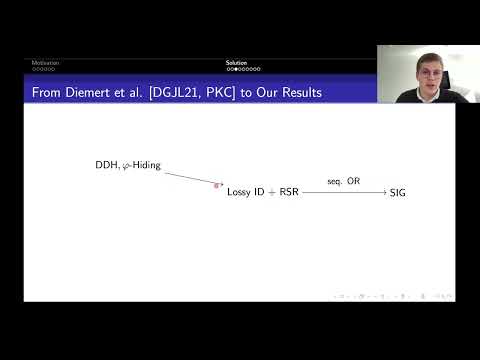CryptoDB
Lattice-based Signatures with Tight Adaptive Corruptions and More
| Authors: |
|
|---|---|
| Download: | |
| Conference: | PKC 2022 |
| Abstract: | We construct the first tightly secure signature schemes in the multi-user setting with adaptive corruptions from lattices. In stark contrast to the previous tight constructions whose security is solely based on number-theoretic assumptions, our schemes are based on the Learning with Errors (LWE) assumption which is supposed to be post-quantum secure. The security of our scheme is independent of the numbers of users and signing queries, and it is in the non-programmable random oracle model. Our LWE-based scheme is compact, namely, its signatures contain only a constant number of lattice vectors. At the core of our construction are a new abstraction of the existing lossy identification (ID) schemes using dual-mode commitment schemes and a refinement of the framework by Diemert et al. (PKC 2021) which transforms a lossy ID scheme to a signature using sequential OR proofs. In combination, we obtain a tight generic construction of signatures from dual-mode commitments in the multi-user setting. Improving the work of Diemert et al., our new approach can be instantiated using not only the LWE assumption, but also an isogeny-based assumption. We stress that our LWE-based lossy ID scheme in the intermediate step uses a conceptually different idea than the previous lattice-based ones. Of independent interest, we formally rule out the possibility that the aforementioned ``ID-to-Signature'' methodology can work tightly using parallel OR proofs. In addition to the results of Fischlin et al. (EUROCRYPT 2020), our impossibility result shows a qualitative difference between both forms of OR proofs in terms of tightness. |
Video from PKC 2022
BibTeX
@inproceedings{pkc-2022-31717,
title={Lattice-based Signatures with Tight Adaptive Corruptions and More},
publisher={Springer-Verlag},
author={Jiaxin Pan and Benedikt Wagner},
year=2022
}

